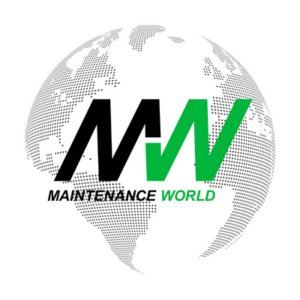Five Pillars for a Maintenance and Reliability Program
James Kovacevic
How does understanding and using the SMRP Body of Knowledge accelerate your current maintenance and reliability program? To begin with, it is designed to provide a framework and outline of what should be in a good program. It also covers some foundational elements, such as project management, change management, etc. All of which are required to start and sustain the program.
The Body of Knowledge, however, does not tell you how to implement a maintenance and reliability program. Why does it not provide the how to? Well, every maintenance & reliability program has the same elements, but they are all very different. The programs must be designed and implemented in a way that fits with the business and is specific to the business goals. These goals will vary across industries and even within industries.
The SMRP Body of Knowledge contains five distinct pillars:
1. Business and management – Describes the skills used to translate an organization’s business goals into appropriate maintenance and reliability goals that support and contribute to the organization’s business results.
2. Manufacturing process reliability – Relates maintenance and reliability activities to the manufacturing process of the organization to ensure that maintenance and reliability activities improve the manufacturing process
3. Equipment reliability – Describes the two kinds of activities that apply to the equipment and processes for which the maintenance and reliability professional is accountable. First, those activities used to assess the current capabilities of the equipment and processes in term of their reliability, availability, maintainability, and criticality. Second are the activities used to select and apply the most appropriate maintenance practices, so that the equipment and processes continue to deliver their intended capabilities in the safest and most cost-effective manner.
4. Organization and leadership – Describes processes for assuring that the maintenance and reliability staff is the most qualified and best assigned to achieve the maintenance and reliability organizational goals.
5. Work management – Focuses on the skills used to get the maintenance and reliability work done. It includes scheduling and planning activities, quality assurance of maintenance activities, stores, and inventory management.
Applying the SMRP Body of Knowledge
In order to apply the Body of Knowledge, one must use all aspects or risk the program failing. This is because Pillar 1 is about building the business case and aligning the maintenance and reliability program with the business goals. Pillar 4 is required to make sure the right resources are in place with the right training, along with managing the significant change that will be implemented in the organization.
Pillar 3 is used to select and build the right maintenance strategy and activities, in order to maintain the level of reliability designed into the equipment. The robust design is a product of other activities in Pillar 3. Pillar 2 is used to minimize the variation in the process, and ensure the product meets the quality specifications. Lastly, Pillar 5 is about ensuring the maintenance activities are carried out as planned, and the right spares are available to ensure the level of work.
Which pillars are used in which order will depend on the current state of your organization. If you have a maintenance program but are unable to execute it, you may need to focus on Pillar 5 first, while using the change management portion of pillar 4. Regardless of the approach, the pillars will provide an outline to lead your program to success.
Compliment the Body of Knowledge
When building a maintenance and reliability program, the current state must be measured, and actions are taken to improve it. This is where metrics come into play. One word of caution: do not try to measure all of the metrics available. Select a few important key performance indicators (KPIs) and start measuring those.
It is okay to change which metrics are used depending on the focus of the organization. Start small and change the metrics as needed, as we don’t need the performance management portion to become its own reporting department.
James Kovacevic, principal instructor at Eruditio, a CFE Media content partner. This article originally appeared on Eruditio’s blog.
Related Articles
When you ask front line supervisors or team leaders if all people in their teams are performing to the same standards or if some are doing more work and achieving more results than others, you will often get the same answer. All over the world, the most common answer, after some analysis, verifies that about 30% of the people do 70% of the work.
When you ask front line supervisors or team leaders if all people in their teams are performing to the same standards or if some are doing more work and achieving more results than others, you will often get the same answer. All over the world, the most common answer, after some analysis, verifies that about 30% of the people do 70% of the work.
See More
Unfettered expression and spiritual satisfaction? How does this relate to managing a maintenance department, especially one in the U.S. Postal Service? Open your mind. Take a page from the Zen Buddhist monks who preach: When you are quiet and listen, you become aware of sounds not normally heard. USPS maintenance leaders are listening and beginning to understand that maintenance success doesn't come through closed minds and closed doors.
Unfettered expression and spiritual satisfaction? How does this relate to managing a maintenance department, especially one in the U.S. Postal Service? Open your mind. Take a page from the Zen Buddhist monks who preach: When you are quiet and listen, you become aware of sounds not normally heard. USPS maintenance leaders are listening and beginning to understand that maintenance success doesn't come through closed minds and closed doors.
See More
It is not uncommon that many reliability and maintenance improvement initiatives fail to deliver expected results. Why is it so? Some of the most common causes I have observed include:
It is not uncommon that many reliability and maintenance improvement initiatives fail to deliver expected results. Why is it so? Some of the most common causes I have observed include:
See More
Why do improvement efforts fail or perhaps not sustain the gains? There are many reasons, but those most often stated are “lack of commitment” and not “following the process”. But why is there lack of commitment, and why aren’t processes followed? Here are a few of the reasons that I’ve seen:
Why do improvement efforts fail or perhaps not sustain the gains? There are many reasons, but those most often stated are “lack of commitment” and not “following the process”. But why is there lack of commitment, and why aren’t processes followed? Here are a few of the reasons that I’ve seen:
See More
When a piece of production machinery broke down at the Whirlpool plant in Findlay, Ohio, several years back, it was accepted practice for the machine operator to call maintenance and then sit back and wait for the problem to be fixed. Critical information and knowledge was not shared between the operator and maintenance technician. Like many companies, these workers were stuck in traditional roles - operators run the machines, maintenance fixes the machines, and the two do not cross. As a result, productivity opportunities were missed.
When a piece of production machinery broke down at the Whirlpool plant in Findlay, Ohio, several years back, it was accepted practice for the machine operator to call maintenance and then sit back and wait for the problem to be fixed. Critical information and knowledge was not shared between the operator and maintenance technician. Like many companies, these workers were stuck in traditional roles - operators run the machines, maintenance fixes the machines, and the two do not cross. As a result, productivity opportunities were missed.
See More
Many managers are unaware that best-in-class companies routinely design-out maintenance at the inception of a project. That, clearly, is the first key to highest equipment reliability and plant profitability. Whenever maintenance events occur as time goes on, the real industry leaders see every one of these events as an opportunity to upgrade. Indeed, upgrading is the second key, and upgrading is the job of highly trained, well-organized, knowledgeable reliability professionals.
Many managers are unaware that best-in-class companies routinely design-out maintenance at the inception of a project. That, clearly, is the first key to highest equipment reliability and plant profitability. Whenever maintenance events occur as time goes on, the real industry leaders see every one of these events as an opportunity to upgrade. Indeed, upgrading is the second key, and upgrading is the job of highly trained, well-organized, knowledgeable reliability professionals.
See More
The true translation — might it be proper to say a new and improved translation? — is being used today by Cervecería Cuauhtemoc Moctezuma, one of the largest brewers of beer in Latin America. Known throughout this company as Mantenimiento Alto Desempeño (MAD), or translated as High-Performance Maintenance, the concept of TPM is alive and well at the company's six plants in Mexico. Perhaps the best example is at CCM's brewery in Tecate, located a short drive from the U.S.-Mexico border on the Baja California peninsula.
The true translation — might it be proper to say a new and improved translation? — is being used today by Cervecería Cuauhtemoc Moctezuma, one of the largest brewers of beer in Latin America. Known throughout this company as Mantenimiento Alto Desempeño (MAD), or translated as High-Performance Maintenance, the concept of TPM is alive and well at the company's six plants in Mexico. Perhaps the best example is at CCM's brewery in Tecate, located a short drive from the U.S.-Mexico border on the Baja California peninsula.
See More










